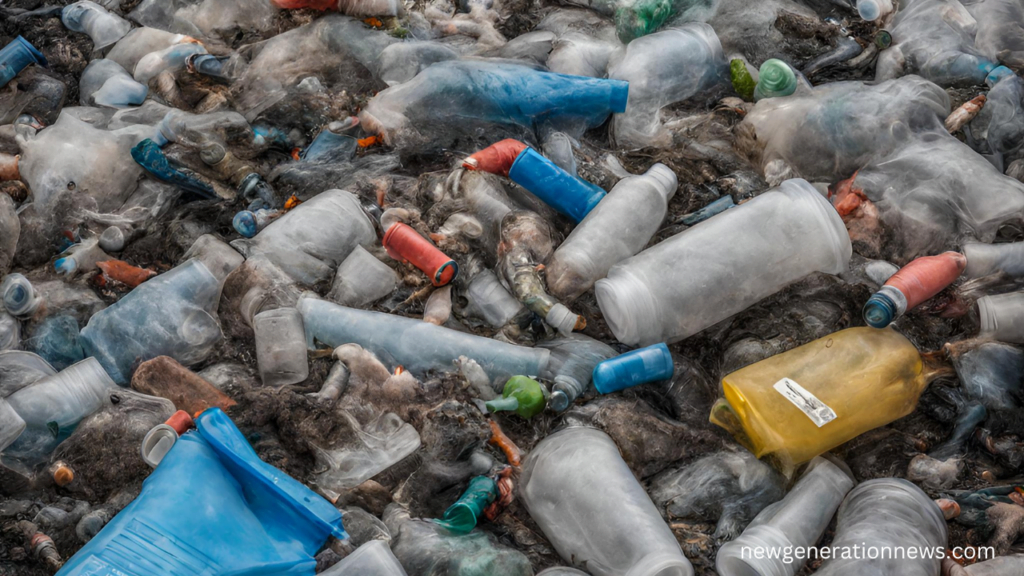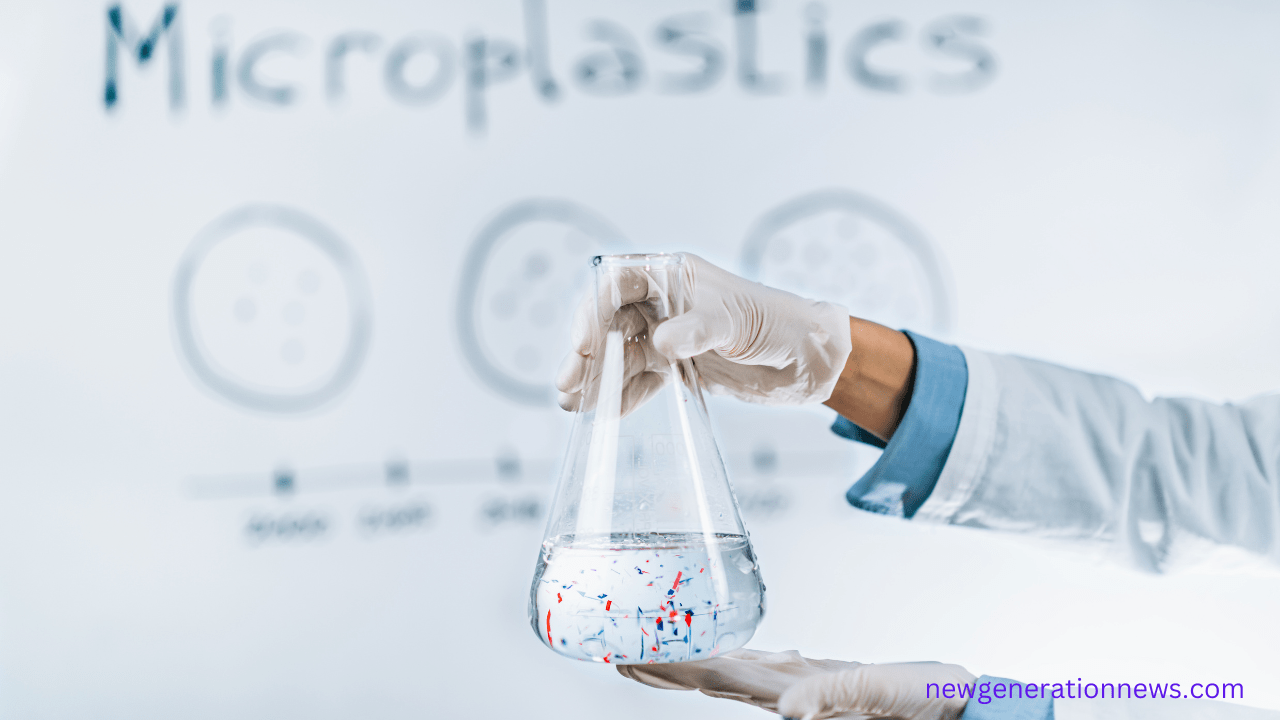The intricate link between microplastics, placenta, and plastic pollution underscores the consequences of our era’s technological advancement and industrial growth. While these advancements have propelled progress across various domains, they have also exacted a toll on the environment. Plastic pollution stands out as one of the most pressing challenges of our time, with its pervasive presence spanning from the highest mountain peaks to the deepest ocean trenches. However, what has garnered recent attention from scientists is the alarming revelation of microplastics’ infiltration into the placenta. This discovery has raised profound concerns regarding its potential repercussions on human health. In this blog post, we will delve into the nuanced connections between microplastics, placenta, and plastic pollution, shedding light on this emerging issue and exploring its far-reaching implications.
Understanding Microplastics:
Before delving into the connection between microplastics and the placenta, it is essential to grasp what microplastics are and how they infiltrate our environment. Microplastics are tiny plastic particles measuring less than 5 millimeters in diameter, often the result of the breakdown of larger plastic debris or the intentional manufacture of small plastic items. These minuscule particles have been found in various ecosystems, including oceans, rivers, soil, and even the air we breathe.
Plastic Pollution: A Global Menace:
Plastic pollution has reached unprecedented levels, with an estimated 8 million metric tons of plastic entering our oceans annually. This pervasive environmental threat poses significant risks to marine life, ecosystems, and human health. From entanglement and ingestion by marine animals to the contamination of food chains, the repercussions of plastic pollution are manifold and far-reaching. Despite growing awareness and efforts to mitigate plastic waste, the scale of the problem continues to escalate, underscoring the urgent need for effective solutions.
The Placenta: A Vital Organ:
The placenta plays a crucial role during pregnancy, serving as a lifeline between mother and fetus. This remarkable organ facilitates the exchange of nutrients, oxygen, and waste products, ensuring the healthy development of the unborn child. Traditionally viewed as a protective barrier, the placenta was believed to shield the developing fetus from external contaminants. However, recent scientific studies have challenged this notion, revealing the presence of microplastics in human placentas, prompting concerns about potential health implications.
The Intricate Link Between Microplastics, Placenta, and Plastic Pollution
The discovery of microplastics in the placenta has sparked widespread concern among scientists and health experts. Studies have detected microplastic particles in the placental tissues of pregnant women, raising questions about how these pollutants breach the placental barrier and their potential effects on fetal development. While the precise mechanisms remain unclear, researchers speculate that microplastics may enter the maternal bloodstream through ingestion, inhalation, or dermal exposure, subsequently crossing the placental barrier and accumulating in fetal tissues.
Health Implications:
The presence of microplastics in the placenta raises profound concerns about their potential impact on maternal and fetal health. While the long-term effects are still largely unknown, emerging evidence suggests that exposure to microplastics during pregnancy could pose risks to fetal development and health. Studies conducted on animals have highlighted adverse effects such as inflammation, oxidative stress, and reproductive toxicity associated with exposure to microplastics. Furthermore, the ability of microplastics to absorb and release toxic chemicals adds another layer of complexity to the issue, amplifying concerns about potential health risks.

Environmental Justice and Equity:
The intersection of microplastics, placenta, and plastic pollution underscores broader issues of environmental justice and equity. Marginalized communities, often disproportionately affected by environmental pollution, bear the brunt of plastic waste and its associated health risks. From industrial pollution to inadequate waste management infrastructure, socio-economic factors play a significant role in exacerbating environmental inequalities. Addressing plastic pollution and its impacts on maternal and fetal health requires a holistic approach that prioritizes environmental justice, community engagement, and policy interventions aimed at reducing plastic waste and promoting sustainable practices.
Towards Solutions:
Addressing the complex interplay between microplastics, placenta, and plastic pollution necessitates concerted efforts at the individual, community, and global levels. Education and awareness-raising initiatives can empower individuals to make informed choices and adopt sustainable behaviors that reduce plastic consumption and waste generation. Additionally, investments in research and innovation are crucial for developing alternative materials, recycling technologies, and waste management strategies that minimize the environmental footprint of plastic production and disposal. Policy interventions, including regulations on single-use plastics, extended producer responsibility schemes, and international agreements, are essential for creating an enabling environment for sustainable resource management and pollution prevention.
However, navigating the complexities of plastic pollution requires a collective effort involving governments, businesses, civil society organizations, and individuals alike. Collaboration across sectors and borders is essential for developing comprehensive solutions that address the systemic challenges underlying plastic pollution. Furthermore, fostering a culture of responsibility and accountability is paramount, encouraging stakeholders to acknowledge their role in driving change and take meaningful action towards sustainability.
At the heart of these efforts lies a fundamental commitment to environmental stewardship and the protection of human health. By recognizing the interconnectedness of microplastics, placenta, and plastic pollution, we can mobilize resources and expertise towards innovative solutions that safeguard both the natural world and our well-being. From reducing plastic consumption and promoting recycling to advocating for policy reforms and supporting community-led initiatives, each of us has a part to play in shaping a more sustainable future.
As we embark on this journey towards a plastic-free future, it is essential to recognize the importance of individual actions in driving collective change. Simple yet impactful measures such as reducing single-use plastic consumption, opting for reusable alternatives, and properly disposing of plastic waste can contribute significantly to mitigating the plastic pollution crisis. Moreover, advocating for policy reforms and supporting initiatives that promote sustainable practices can amplify our impact and accelerate progress towards a more sustainable future.
Education also plays a pivotal role in shaping attitudes and behaviors towards plastic consumption and waste management. By integrating environmental literacy into educational curricula and raising awareness through public campaigns, we can empower individuals to make informed choices and become agents of positive change in their communities. Additionally, fostering a culture of environmental responsibility from an early age instills values of conservation and stewardship, laying the foundation for a more sustainable society.
Innovative technologies and research-driven solutions are instrumental in addressing the multifaceted challenges posed by plastic pollution. From advanced recycling technologies to biodegradable alternatives, scientists and innovators are pioneering new approaches to minimize the environmental impact of plastic production and disposal. Furthermore, interdisciplinary research collaborations are essential for gaining a comprehensive understanding of the complex interactions between microplastics, human health, and the environment, informing evidence-based policymaking and interventions.
International cooperation is paramount in tackling plastic pollution, given its transboundary nature and global implications. Through multilateral initiatives, partnerships, and agreements, countries can harmonize efforts, share best practices, and mobilize resources towards achieving common goals. Furthermore, addressing the root causes of plastic pollution requires a holistic approach that considers socio-economic factors, promotes sustainable development, and prioritizes the needs of vulnerable communities.
Ultimately, the fight against plastic pollution is a defining challenge of our time, requiring bold action, innovation, and collaboration on a global scale. By harnessing the collective power of governments, businesses, civil society, and individuals, we can chart a course towards a future where plastic pollution is no longer a threat to human health, wildlife, and the environment. Together, let us embrace the opportunity to create a world where nature thrives, and future generations inherit a planet that is clean, healthy, and sustainable.
In conclusion, the nexus between microplastics, placenta, and plastic pollution highlights the urgent need for concerted action to address this pressing environmental and public health issue. By fostering awareness, driving innovation, and promoting collaboration, we can pave the way towards a more sustainable and resilient future for all. The time to act is now.
You might be interested to read 1}New Phone, Who Dis? Unveiling the Intriguing Evolution of Mobile Communication 2}Unveiling the Cosmic Connection: Exploring Moon Phase Compatibility in Relationships

